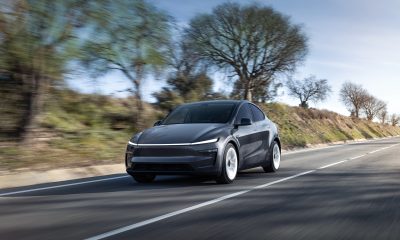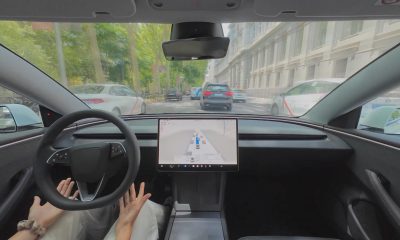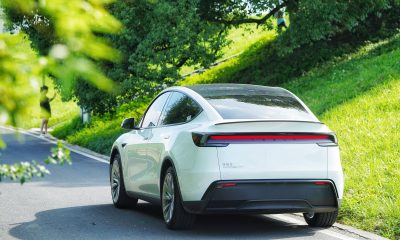Lifestyle
Politics aside, EVs will be — must be — the future of transportation
President-elect Donald Trump hardly professed to be a friend of clean renewable energy during his campaign, that’s for sure. The forces of change toward a sustainable energy future for the U.S. and world, however, are so powerful and dynamic that a Trump presidency may not be able to stop them. The momentum inspired by Tesla’s Elon Musk, MIT’s Electric Vehicle Team, the Google Self-Driving Car Project, Panasonic batteries, “Last Mile” transportation, The Route electric refuse trucks, and so many other electric vehicles is too strong and too ingrained in our culture to be stymied now.
As Rebecca Solnit wrote in her classic book, Hope in the Dark, “You possess the power to change the world to some degree, the current state of affairs is not inevitable, and all trajectories are not downhill.” With activism and advocacy, as well as technological innovations that emerge regardless of political times, clean renewable energy sources will continue to expand. They must, for the sake of our planet.
For example, some things just have not changed in Americans’ relationships to their cars. Over the past 50 years, automobiles have been our freedom machines, a means of both transportation and personal identity expression. In the same way that Henry Ford matched a youthful and euphoric generation to the combustion-engine automobile, so, too, will tomorrow’s automakers continue to design strategic moves to shape the industry’s evolution.
Electric vehicles (EVs) are at the heart of that vision for tomorrow’s consumer domestic transportation. Here are some reasons why EVs will continue to flourish and change the way automakers in the U.S. and abroad have conducted business as usual.
Automakers will continue to know what the customer wants and provide it
Consumer acceptance has already established a formidable EV market. EVs include a large portion of hybrid electrics, which means that, even beyond 2030, the internal-combustion engine will remain — at least partially — relevant. Yet we’ll likely encounter a common culture of electrified vehicles –hybrid, plug-in, battery electric, and fuel cell — in the years to come. But only an iconoclastic automaker will offer consumers a combustion engine without the electric perks.
Consumers just want to be connected
The capacity to be able to consume novel forms of media and other technology applications while driving will only become more prevalent among commuters. This will be possible, in part, through enhanced levels of automotive software competence. It’s an immediate gratification world already, and, with the emergence of new forms of infotainment technologies and virtual realities, consumers are only going to yearn for more connectivity. Traditional automakers will give their customers what they want in connectivity, inching every so much closer to comprehensive EV technologies.
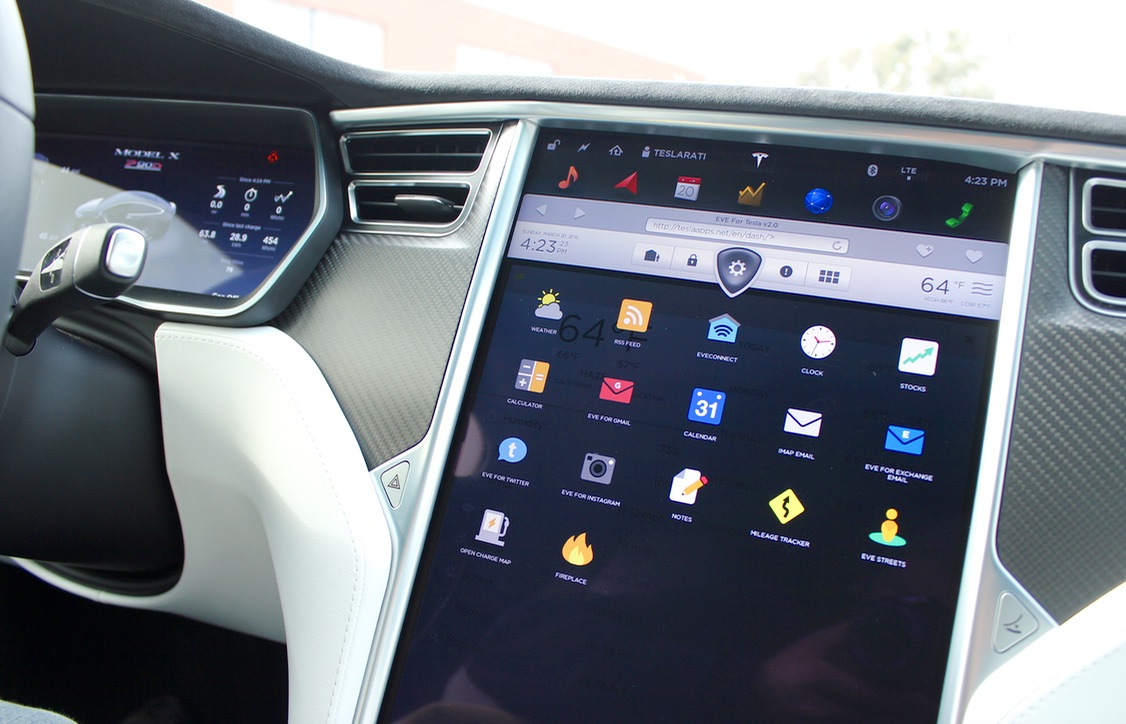
Suite of “apps” found within EVE for Tesla
Improvements in battery technology and costs
Through continuous improvements in battery technology and cost, electrified vehicles will become more “normal” and more likely to be found in the average American’s garage. As a result, EVs will increasingly grab market share from conventional vehicles. With battery costs potentially decreasing by $150 to $200 per kilowatt-hour over the next decade, electrified vehicles will be able to compete more heartily and broadly with conventional vehicles. Automakers will migrate to this new battery technology because it will make obvious financial sense.
A more widely available charging infrastructure
Increasingly, many retailers are seeing the benefit of customers who browse inventories deeply and purchase more intensely as they wait for their EVs to charge outside in the parking lot. This collaboration between EV drivers and retailers will certainly expand the demand for and number of corridor-based charging stations. Shopping centers, entertainment stops, and EV charging may require charging station standardization, of course, for the gestalt to be fully pervasive. That will take consensus-building with other charging station manufacturers.
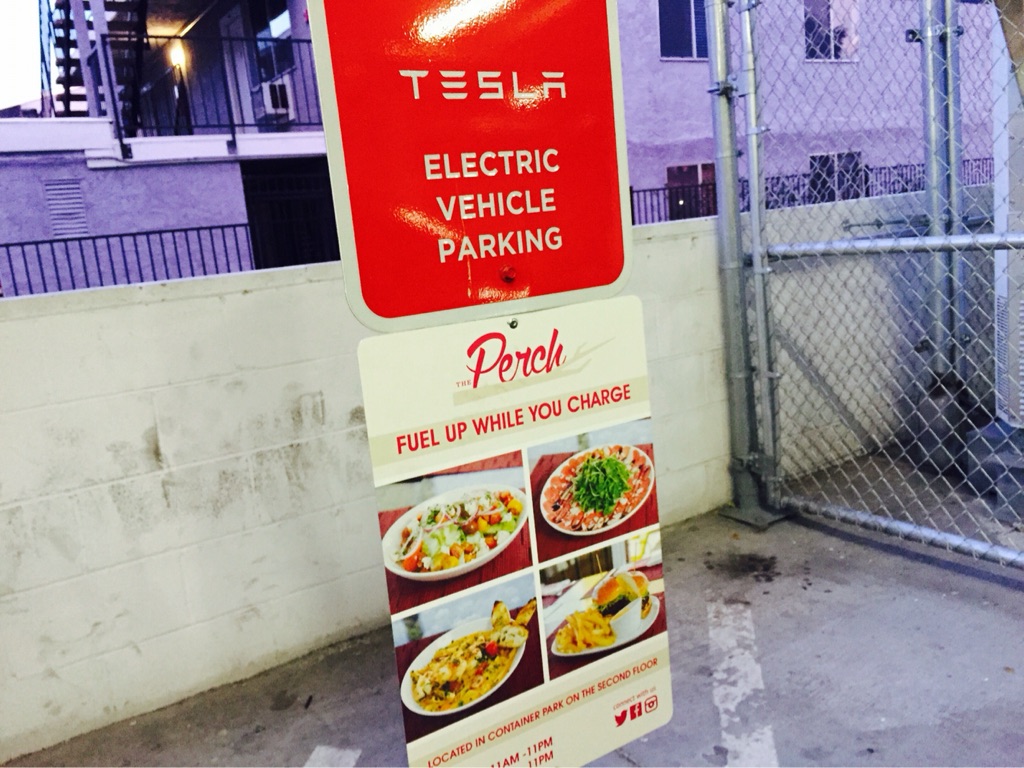
A local restaurant advertising to Tesla owners at the Las Vegas Supercharger.
Autonomous technology
Advanced driver assistance systems (ADAS), with their associated active safety precautions, will quickly allow the automobile to become a platform for drivers and passengers to choose how to use their transit time. EVs and ADAS are so interwoven already that the future must continue those marriages. Yes, there’s still lots of progress that needs to be done around technological and regulatory issues fronts, but is it excessive to think that around 15 percent of new cars sold in 2030 could be fully autonomous? Not really.
Diverse mobility solutions are coming
Traditional business models of car sales will be complemented by a range of diverse, on-demand mobility options. These are sometimes called “last mile” solutions and are particularly necessary in dense urban environments that limit private car entrance. Think central London. EVs are certain to be integral to the trend to increase and diversify on-demand mobility and data-driven services.
Stricter emission regulations
We’re not really sure that a Trump presidency will speed federal regulations toward greater fuel efficiency, if some comments he made on the campaign trail can actually find their way into governance. But, if the U.S. holds to its pledges to further the goals of the Paris Climate Conference (also known as COP21), automakers will scramble to balance out their catalogs. Their gas guzzling behemoths in the full-sized truck category will need their siblings, fuel-efficient EVs. Traditional automakers may have no other recourse than to adopt an EV line of offerings in order to offset those nasty truck MPGs.
The push for traditional automakers to become more capital efficient
Like any business, traditional automakers are under constant pressure from stockholders, who want to see lower overheads, improved fuel efficiency, and reduced emissions. Even if incentives toward purchases of EVs expire, stockholder influences may propel a shift of automaker perspectives, based on little more than the bottom line. This push toward greater capital efficiency will necessarily lead to new business relationships between automakers and technologists.
Competition from abroad
Always on the (pun intended) horizon is the looming threat of other countries and their automotive innovations. It seems unlikely that a Trump administration can foster the political power to exclude car imports, and, anyways, U.S. automakers would like nothing more than to transform their models for the global marketplace. For example, China’s emergence as the world’s largest automotive market can only expand in the coming years and, with that need to supply an enormous consumer base, will be trends toward EVs. U.S. automakers may find themselves outside the marketplace if they don’t keep up with their counterparts abroad.
Conclusion
A white paper titled “Automotive revolution — Perspective toward 2030” describes how the coming generations should see the share of electrified vehicles range from 10 percent to 50 percent of new-vehicle sales. Adoption rates will be highest in developed dense cities with strict emission regulations and consumer incentives. These include tax breaks, special parking and driving privileges, or discounted electricity pricing. Sales may be less robust in small towns and rural areas with lower levels of charging infrastructure and higher dependency on driving range.
As Hillary Clinton said in her concession speech, “Never stop believing that fighting for what’s right is worth it.” Changing consumer preferences, tightening regulation, and technological breakthroughs, among myriad other factors, point to the dominance of EVs in the decades to come. We’ve got to use this moment in political time to rise up and speak out for the future of electric vehicles.
Elon Musk
X account with 184 followers inadvertently saves US space program amid Musk-Trump row
Needless to say, the X user has far more than 184 followers today after his level-headed feat.
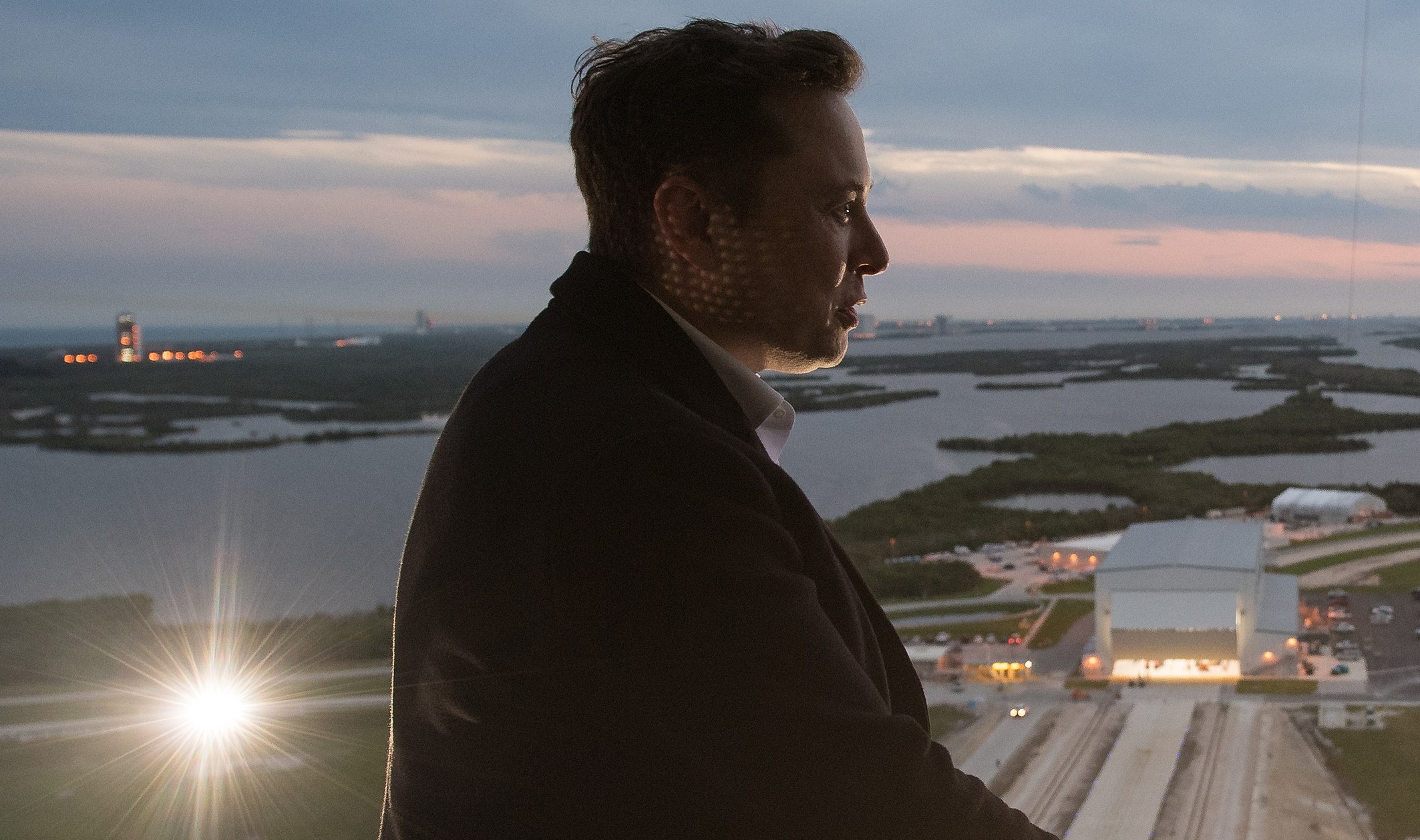
An X user with 184 followers has become the unlikely hero of the United States’ space program by effectively de-escalating a row between SpaceX CEO Elon Musk and President Donald Trump on social media.
Needless to say, the X user has far more than 184 followers today after his level-headed feat.
A Near Fall
During Elon Musk and Donald Trump’s fallout last week, the U.S. President stated in a post on Truth Social that a good way for the United States government to save money would be to terminate subsidies and contracts from the CEO’s companies. Musk responded to Trump’s post by stating that SpaceX will start decommissioning its Dragon spacecraft immediately.
Musk’s comment was received with shock among the space community, partly because the U.S. space program is currently reliant on SpaceX to send supplies and astronauts to the International Space Station (ISS). Without Dragon, the United States will likely have to utilize Russia’s Soyuz for the same services—at a significantly higher price.
X User to the Rescue
It was evident among X users that Musk’s comments about Dragon being decommissioned were posted while emotions were high. It was then no surprise that an X account with 184 followers, @Fab25june, commented on Musk’s post, urging the CEO to rethink his decision. “This is a shame this back and forth. You are both better than this. Cool off and take a step back for a couple days,” the X user wrote in a reply.
Much to the social media platform’s surprise, Musk responded to the user. Even more surprising, the CEO stated that SpaceX would not be decommissioning Dragon after all. “Good advice. Ok, we won’t decommission Dragon,” Musk wrote in a post on X.
Not Planned, But Welcomed
The X user’s comment and Musk’s response were received extremely well by social media users, many of whom noted that @Fab25june’s X comment effectively saved the U.S. space program. In a follow-up comment, the X user, who has over 9,100 followers as of writing, stated that he did not really plan on being a mediator between Musk and Trump.
“Elon Musk replied to me. Somehow, I became the accidental peace broker between two billionaires. I didn’t plan this. I was just being me. Two great minds can do wonders. Sometimes, all it takes is a breather. Grateful for every like, DM, and new follow. Life’s weird. The internet’s weirder. Let’s ride. (Manifesting peace… and maybe a Model Y.)” the X user wrote.
Lifestyle
Tesla Cybertruck takes a bump from epic failing Dodge Charger
The Cybertruck seemed unharmed by the charging Charger.

There comes a time in a driver’s life when one is faced with one’s limitations. For the driver of a Dodge Charger, this time came when he lost control and crashed into a Tesla Cybertruck–an absolute epic fail.
A video of the rather unfortunate incident was shared on the r/TeslaLounge subreddit.
Charging Charger Fails
As could be seen in the video, which was posted on the subreddit by Model Y owner u/Hammer_of_something, a group of teens in a Dodge Charger decided to do some burnouts at a Tesla Supercharger. Unfortunately, the driver of the Charger failed in his burnout or donut attempt, resulting in the mopar sedan going over a curb and bumping a charging Cybertruck.
Ironically, the Dodge Charger seemed to have been parked at a Supercharger stall before its driver decided to perform the failed stunt. This suggests that the vehicle was likely ICE-ing a charging stall before it had its epic fail moment. Amusingly enough, the subreddit member noted that the Cybertruck did not seem like it took any damage at all despite its bump. The Charger, however, seemed like it ran into some trouble after crashing into the truck.
Alleged Aftermath
As per the the r/TeslaLounge subreddit member, the Cybertruck owner came rushing out to his vehicle after the Dodge Charger crashed into it. The Model Y owner then sent over the full video of the incident, which clearly showed the Charger attempting a burnout, failing, and bumping into the Cybertruck. The Cybertruck owner likely appreciated the video, in part because it showed the driver of the Dodge Charger absolutely freaking out after the incident.
The Cybertruck is not an impregnable vehicle, but it can take bumps pretty well thanks to its thick stainless steel body. Based on this video, it appears that the Cybertruck can even take bumps from a charging Charger, all while chilling and charging at a Supercharger. As for the teens in the Dodge, they likely had to provide a long explanation to authorities after the incident, since the cops were called to the location.
Lifestyle
Anti-Elon Musk group crushes Tesla Model 3 with Sherman tank–with unexpected results
Ironically enough, the group’s video ended up highlighting something very positive for Tesla.

Anti-Elon Musk protesters and critics tend to show their disdain for the CEO in various ways, but a recent video from political action group Led By Donkeys definitely takes the cake when it comes to creativity.
Ironially enough, the group’s video also ended up highlighting something very positive for Tesla.
Tank vs. Tesla
In its video, Led By Donkeys featured Ken Turner, a 98-year-old veteran who served in the British army during World War II. The veteran stated that Elon Musk, the richest man in the world, is “using his immense power to support the far-right in Europe, and his money comes from Tesla cars.”
He also noted that he had a message for the Tesla CEO: “We’ve crushed fascism before and we’ll crush it again.” To emphasize his point, the veteran proceeded to drive a Sherman tank over a blue Tesla Model 3 sedan, which, of course, had a plate that read “Fascism.”
The heavy tank crushed the Model 3’s glass roof and windows, much to the delight of Led By Donkeys’ commenters on its official YouTube channel. But at the end of it all, the aftermath of the anti-Elon Musk demonstration ended up showcasing something positive for the electric vehicle maker.
Tesla Model 3 Tanks the Tank?
As could be seen from the wreckage of the Tesla Model 3 after its Sherman encounter, only the glass roof and windows of the all-electric sedan were crushed. Looking at the wreckage of the Model 3, it seemed like its doors could still be opened, and everything on its lower section looked intact.
Considering that a standard M4 Sherman weighs about 66,800 to 84,000 pounds, the Model 3 actually weathered the tank’s assault really well. Granted, the vehicle’s suspension height before the political action group’s demonstration suggests that the Model 3’s high voltage battery had been removed beforehand. But even if it hadn’t been taken off, it seemed like the vehicle’s battery would have survived the heavy ordeal without much incident.
This was highlighted in comments from users on social media platform X, many of whom noted that a person in the Model 3 could very well have survived the ordeal with the Sherman. And that, ultimately, just speaks to the safety of Tesla’s vehicles. There is a reason why Teslas consistently rank among the safest cars on the road, after all.
-

 Elon Musk4 days ago
Elon Musk4 days agoTesla investors will be shocked by Jim Cramer’s latest assessment
-

 News1 week ago
News1 week agoTesla Robotaxi’s biggest challenge seems to be this one thing
-

 Elon Musk2 weeks ago
Elon Musk2 weeks agoFirst Look at Tesla’s Robotaxi App: features, design, and more
-

 News2 weeks ago
News2 weeks agoSpaceX and Elon Musk share insights on Starship Ship 36’s RUD
-

 News2 weeks ago
News2 weeks agoWatch Tesla’s first driverless public Robotaxi rides in Texas
-

 News1 week ago
News1 week agoWatch the first true Tesla Robotaxi intervention by safety monitor
-

 News2 weeks ago
News2 weeks agoTesla has started rolling out initial round of Robotaxi invites
-

 Elon Musk2 weeks ago
Elon Musk2 weeks agoTesla to launch in India in July with vehicles already arriving: report


